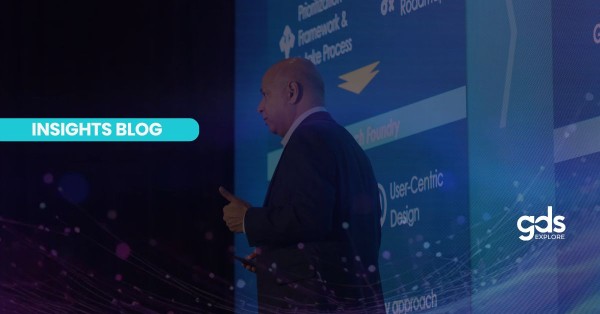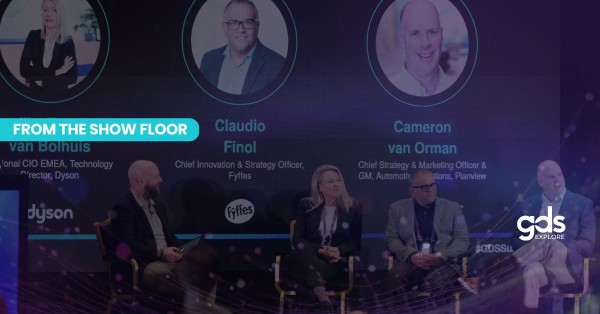In today’s rapidly changing and challenging business landscape, resilience has emerged as the key factor separating successful organizations from those struggling to keep up. In this article, we explore five essential steps—reinventing change management, effective incident management, prioritizing testing, leveraging observability, and staying current with best practices—that can help organizations build a more resilient and adaptive foundation for success.
In brief:
- Change management – Streamline change management processes by reinventing and automating tasks.
- Incident management – Address the challenges of chaotic large-scale enterprise discussions by embracing war rooms, separating business and IT conversations.
- Testing – Enhance overall resiliency by prioritizing and automating testing in the development process.
- Observability – Maximize IT tool effectiveness by prioritizing observability and leveraging products with open APIs.
- Best practices – Take a fresh look at your systems and processes to see if you are set up the same way. Source the opportunities available to you and work out how to capitalize on them.
We find ourselves in very challenging times. Still stabilizing from a global pandemic, disruption is at a higher level than seen in generations and internal and external headwinds are destabilizing even the most steadfast businesses. So, what separates those that are advancing at the speed of change from those floundering under the pressure? The key is resilience.
And that word, resilience, touches every part of our enterprise. Firstly, data. There’s been an exponential rise in data, projected to reach 175 zettabytes globally by 2025, and the rapid pace of transformation has left businesses dependent on the collaborative force of IT and operational resiliency. So, we must take steps to ensure our resiliency strategy supports changing business parameters.
Then, when we turn to cyber security, understanding how to learn and recover from attacks and breaches, while operating with little to no downtime, is a central cog in our resilience function. The fact is human error is the main contributor to 95% of data breaches. Therefore, we have to provide the education our employees need while weeding out bad actors to ensure IT security proficiency.
And, while we’re on the subject of employees, we must touch on building a more resilient workforce. With worker age advancing, with the number of employees aged 65 or older growing by 117% over 20 years, it’s important to consider how to build the next generation of IT staff and maximize skillsets across the board.
In a showcase with global infrastructure technology leader, Broadcom, we heard from their Director of AIOps and Automation, Nicole Fagen, about the five steps to take now to build a more resilient enterprise.
“The key thing to bear in mind,” says Fagen, “is that you are going to have issues. The goal is to be proactive in preventing them, to absorb the impact and be able to minimize the mean time to recovery (MTTR).”
1. Change management.
The first phase is change management. The most troubling challenges for organizations are having too many tools, the change management process being too complicated or too manual and, in the midst of an issue, they are struggling to find the root cause in their systems.
Fagen’s advice?
“Take a moment and reinvent the process.”
Nicole Fagen, Director of AIOps and Automation at Broadcom.
“We know there are too many tools. So, identify what you hope to get out of having a change management process and make the necessary changes.”
Being able to see what was most recently changed, get to it quickly and understand the impact, plus communicate it to key stakeholders is typically the goal. “This can be streamlined by automating the processes tasks,” Fagen says. “Much of the information in a change management system can be automated, making it much easier going forward.”
2. Incident management.
“When you have a big issue in a large enterprise, you can find yourself on a video call with over 100 people,” shares Fagen. “Everyone wants to be able to contribute, but it often becomes chaos. Business conversations, recovery conversations and route cause conversations are all happening in one space, so it’s not clear who is calling the shots and where we should be focused.”
So, how can we address this?
- Accept war rooms are here to stay.
- Allow for business conversations to happen simultaneously as IT conversations – don’t put them in one space.
- Trust in the staff that are closest to the heart of the problem and minimize sidebar contact.
- Create a no-blame culture so you can have an open dialogue around the issue and staff feel empowered to share their thoughts without fear of ramification.
3. Testing.
Prioritizing testing and integrating it into the development process can improve overall resiliency. But how?
“Everybody would love to automate testing,”
Nicole Fagen, Director of AIOps and Automation at Broadcom.
“It’s a big deal and a big investment. It allows developers to do unit and function tests, making things smoother and better tested. And, as you go to production do A/B testing. If it works well, it can be broadly rolled out.”
4. Observability.
Organizations want to leverage IT tools to derive insights, yet this can only be achieved when you can accurately measure a system’s current state by examining its outputs – otherwise known as observability.
“The best practice here,” shares Fagen, “is to work with products that are committed to making data available via APIs – preferably open APIs – so that operations tools can help operations staff use that data to begin shifting their focus from reactive recovery to proactive avoidance.”
5. Best practices.
It can be difficult to keep up with best practices which are constantly evolving, so try doing it in a way that suits your organization, recommends Fagen. “Keep current with best practices. Take that periodic check quarterly or annually and a fresh look at your systems and processes to see if you are set up the same way. Source the opportunities available to you and work out how to capitalize on them.”
Conclusion.
In these challenging times resilience is the differentiating factor between businesses thriving and those struggling to keep up. Resilience permeates every aspect of an enterprise, and to foster resilience organizations need to look at reinventing change management processes, effectively managing incidents through dedicated spaces and open communication, prioritizing testing, and automation, embracing observability to derive valuable insights, and staying current with evolving best practices. By implementing these steps, businesses can proactively prevent issues, absorb impacts, and minimize the mean time to recovery, ultimately fostering a more resilient and adaptive organization.
GDS Showcases take your audience to another world from wherever they are. Enter an energizing digital event environment for your internal communications, company meetings, sales pitches, or product launches. A Showcase will ensure that your message lands with style.
Partnering with GDS Group can help you get in front of the right people at the right time.
Alternatively, don’t miss out on the opportunity to attend one of our unforgettable event experiences that promise to leave you feeling inspired and empowered.
Check our calendar now and join us. We can’t wait to see you there!











